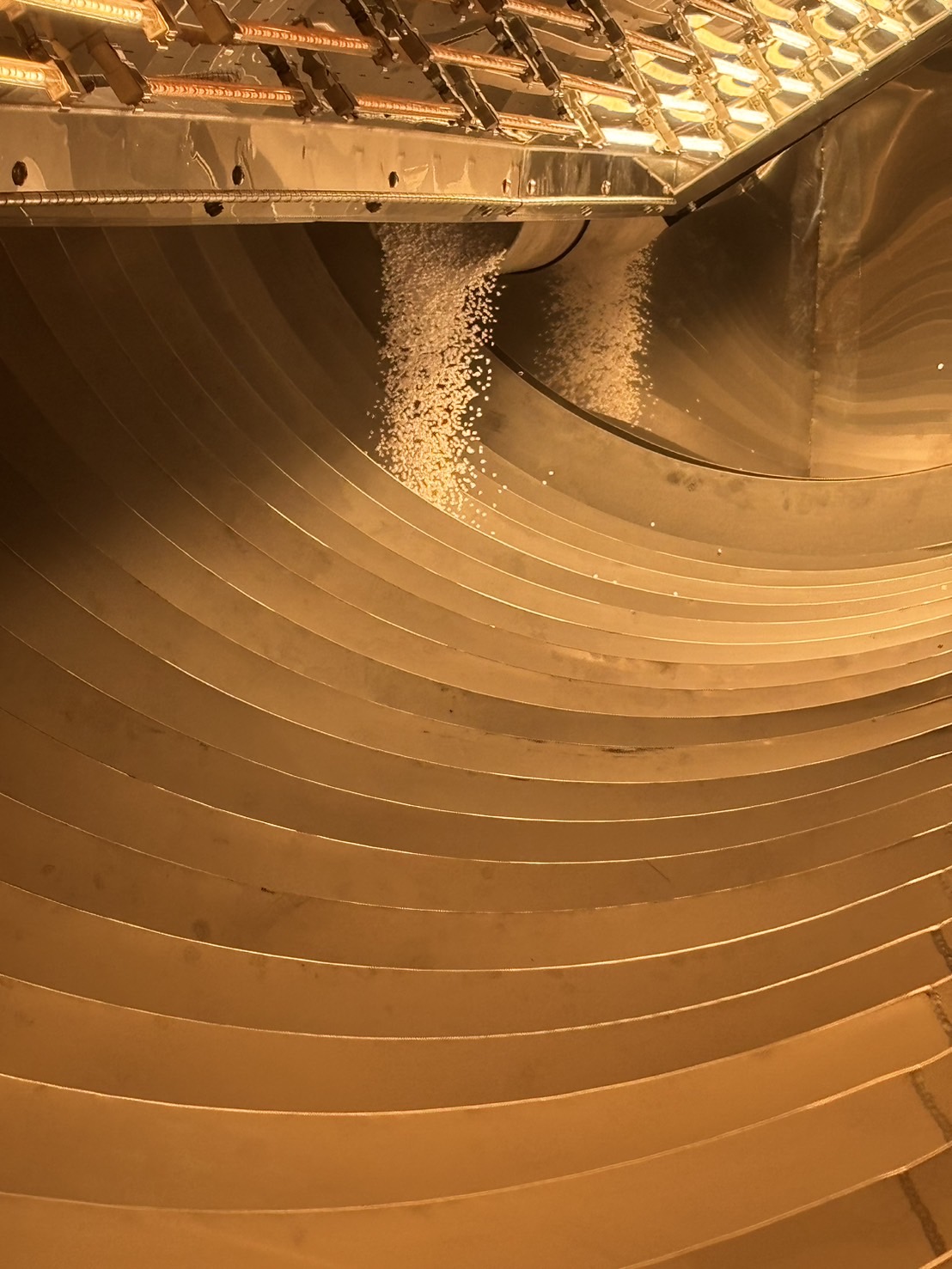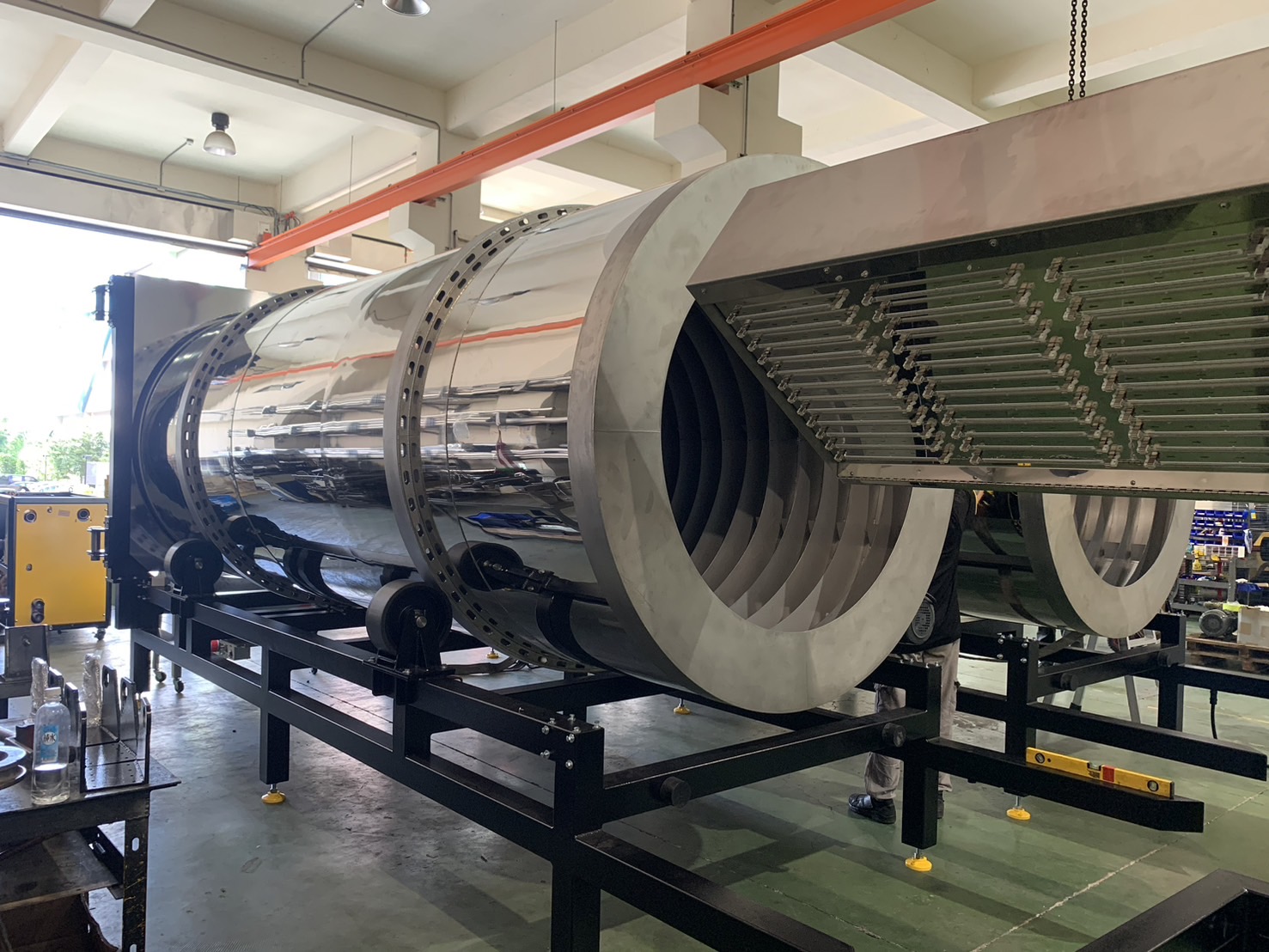Infrared vs. Traditional Crystallization: A Comparative Analysis with the Infrared Rotary Dryer
- 2024.02.07
 Flying Tiger
Flying Tiger
Crystallization plays a crucial role in PET processing. It makes the plastic stronger, stiffer, and more resistant to heat and chemicals. It also gives more control over the plastic's shape, making it flexible for many industrial uses.
Back then, companies relied on traditional and cumbersome industrial crystallization processes to make plastic crystals with certain properties. However, recent technological advancements have led to more efficient techniques. A prime example of this is the use of infrared technology in crystallization.
In this article, we will compare traditional crystallization methods to the new Infrared Rotary Dryer.
Understanding Traditional Crystallization
The use of traditional methods, especially in the context of crystallization vs. recrystallization, to turn amorphous PET into a semi-crystalline polymer is now becoming a thing of the past. The process involves heating the polymer to a specific temperature, typically between 140 and 160°C, where it becomes a semi-crystalline solid from its amorphous glass state.
As the temperature rises, the polymer chains gain enough energy to move into an organized, crystalline state. Usually, this method works with tiny templates called nucleating agents that help it happen. These agents help shape the physical structure of the polymer by guiding its crystallinity.
Although many industries consider the use of traditional plastic dryers and crystallizers time-consuming, it has significantly leveraged its role because it is easy to apply and control the industrial crystallization process. For instance, manufacturers can also customize the polymer properties using this method. They can adjust the crystallization conditions like cooling rate, temperature, and nucleating agents to suit different applications. In the traditional process of crystallization, it's important to find the right balance between efficiency and quality, which requires controlling the elements precisely.
Let's look at the cutting-edge Infrared Rotary Dryer technology and uncover its mechanics and benefits over the conventional method in our comparative analysis.
Innovating Crystallization with Infrared Technology
Infrared technology has become a sought-after alternative to traditional methods when it comes to heating amorphous PET for crystallization. Unlike the old methods where the whole polymer needs to be heated to the right temperature for crystallization, infrared radiation directly targets the polymer chains. This direct approach speeds up the process and does away with the need for conductive or convective heat transfer, which is common in traditional methods.
The Infrared Rotary Dryer is at the forefront of this innovation with a unique feature: a spinning 'umbrella' inside that heats the PET material with infrared waves. This rotation ensures that infrared heat is applied uniformly, leading to even and consistent crystallization across all the polymer particles. Unlike traditional methods, this setup avoids the problem of clumping or bridging, where polymer particles stick together or form structures that hinder the process.
Moreover, the Infrared Rotary Dryer is more than just a heating unit. It bridges the gap between crystallization and recrystallization by combining drying, crystallizing, and preheating in one unit. This is a big step forward compared to typical plastics dryer technology which requires separate units for each process. By combining these processes, the Infrared Rotary Dryer saves energy, improves production efficiency, and lowers the risk of polymer degradation, issues often encountered in traditional crystallization methods.
This new approach to crystallization with the Infrared Rotary Dryer showcases a clear advancement over traditional techniques. It not only makes the process quicker and more energy-efficient but also enhances the quality of the crystals produced. This is a win for businesses looking to improve their PET processing methods while also being mindful of energy consumption and production quality.

Comparative Analysis of Efficiency and Energy Savings
The quest for efficiency and energy savings in the industrial field has driven the continuous evolution and implementation of new technologies, the discussion on crystallization vs. recrystallization being no exception. Both traditional and infrared crystallization methods have their advantages. Comparing these methods in terms of energy efficiency, time savings, and crystal quality can bring differences to the fore.
Energy Efficiency
In traditional crystallization, heat is generated through electrical resistances or oil-fired heaters. This heat is then transferred to the polymer through conduction or convection. Although these techniques work, they use a lot of energy and can cause heat loss.
On the other hand, the Infrared Rotary Dryer transfers energy to the amorphous PET through radiation. This targets the polymer chains and eliminates the need for a contiguous medium to convey heat energy. Using this method saves energy because infrared emitters only work when and where needed.
Time Savings
Undeniably, achieving ideal conditions in traditional methods for crystallization takes a lot of time. This is because you have to control the temperature and cooling rates very precisely. As such, the usual method takes longer to make sure the heat spreads evenly in the material.
Meanwhile, the Infrared Rotary Dryer technology allows for a markedly faster crystallization process. The heat from infrared radiation quickly warms up the polymer particles. The rotating umbrella mixes the PET, distributing heat and reducing crystallization time.
Crystal Quality
Again, traditional methods require precise control of temperature, cooling rates, and nucleating agents. As a result, the quality of the crystals can vary depending on how well the controls are used.
In comparison, the Infrared Rotary Dryer improves crystal quality by distributing heat and agitating PET particles. Its mechanics create consistent crystal formation, preventing clumps and blockages while achieving an ideal balance of efficiency and crystal quality.
Needless to say, the Infrared Rotary Dryer stands as a better option for PET crystallization. It's more advanced, more efficient, and more effective. By combining energy savings, shorter process time, and superior crystal quality, the Infrared Rotary Dryer is geared to become the standard crystallization method in modern industries.
Delving into Real-World Performance
Infrared technology offers tremendous benefits to various types of crystallized products.
First, the plastic packaging industry, particularly bottle production, can substantially benefit from Infrared Rotary Dryer technology. By ensuring more durable PET bottles, this innovation leads to increased efficiency, cost-effectiveness, and improved overall quality.
For the textile industry, better PET chip crystallization translates to high-quality and durable polyester fibers. The energy savings associated with infrared drying significantly reduce operating costs, making it an attractive option in this energy-intensive sector.
The food industry relies heavily on the safety and resilience of packaged foods. Infrared technology offers better PET crystallization, resulting in superior packaging material quality. And, the efficient heating process significantly reduces contamination risks, ensuring a higher level of food safety.
Lastly, the electronics industry uses PET in many components, including insulating materials and coatings. Uniform and high-quality crystallization achieved through infrared technology enables the production of reliable electronic parts. The added advantage of energy savings makes this an appealing choice for electronics manufacturers.
Regardless of the specific industry, the Infrared Rotary Dryer presents opportunities for improvement in different types of crystallized products.
Implications for PET Processing Industries
Using infrared crystallization technology is more than just upgrading machinery for PET processing industries. It aligns with the objectives of contemporary industries, which are focused on efficiency, sustainability, and superior quality.
Efficiency
Old crystallization methods consume so much time due to their heavy reliance on increasing temperature evenly across the bulk material. In contrast, infrared technology makes quick work of crystallization, translating to higher production capacities, decreased downtimes, and ultimately, enhanced business performance.
Sustainability
With the growing urgency to combat climate change and reduce carbon footprints, industries are being pushed to adopt more sustainable practices. Infrared crystallization can save a lot of energy, which is important for sustainability. Plus, infrared technology works at lower temperatures, lowering the risk of polymer degradation and reducing waste in the crystallization process.
Quality
The need for consistent, high-quality products in the competitive business environment cannot be overstated. The Infrared Rotary Dryer maintains quality in PET products by delivering consistent crystallization. This technology prevents the clumping or bridging of crystals, reducing defects and improving product quality and reliability in production.
The implications of adopting infrared crystallization technology are nothing less than profound. This completely changes how PET processing industries work, how they affect the environment, and the quality of their products.
Infrared technology is not just an innovative solution; rather it's a step towards a smarter future for PET processing industries.
Exploring the Opportunities with Infrared Rotary Dryer Technology
The Infrared Rotary Dryer represents a notable advancement in crystallization technology, offering substantial benefits that significantly outshine traditional methods. By ensuring energy efficiency, time savings, and superior crystal quality, this innovative approach not only enhances the process of crystallizing PET but also aligns with the modern industry's shift towards sustainable practices. The discussion highlighted the dryer's mechanism, utilizing infrared radiation to directly energize polymer chains, thereby accelerating the crystallization process and ensuring uniformity in crystal formation. Moreover, real-world applications across various industries including packaging, textile, food, and electronics were explored, underscoring the technology's broad potential to elevate product quality while trimming operational costs.
Furthermore, the adoption of infrared crystallization technology sets a new precedent in eco-friendly PET processing, marking a win-win scenario for both the industry and the environmental front. This transition embodies a significant stride towards melding operational excellence with ecological responsibility. If the Infrared Rotary Dryer piques your interest and you are keen on delving deeper into its benefits, Flying Tiger extends a warm invitation for further engagement. Our knowledgeable team is ready and willing to provide more insights and address any inquiries you may have, facilitating a thorough understanding of how this technology could be a game-changer in your PET processing endeavors.
Back






